PrAACtical Partnerships: AAC and Academics
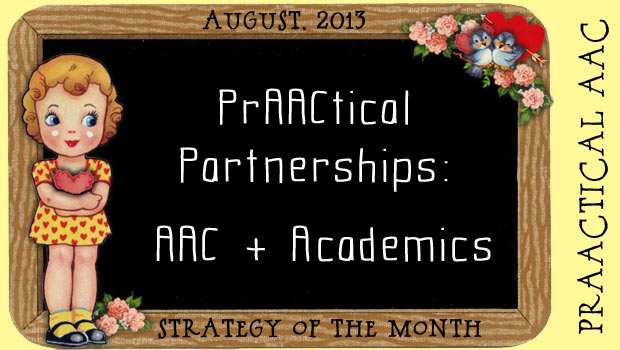
Like many of you, we are always racking our brains trying to help students who use AAC be successful academically. Because we serve these students in a clinical setting, we could easily pass on the opportunity to align our AAC goals with academic standards but what would be the fun in that? Here are some things we try to think about with school-aged kids who have AAC needs.
SLP to SLP
If it takes a village to raise a child, how many people does it take to help a kids with AAC needs to develop communicative competence and succeed academically? It boggles the mind. As SLPs, message is this: We have to work together. Many kids who use AAC have private therapies in addition to their school services, and yet, we rarely connect. We have to find a way to do a better job at this so that kids with AAC needs learn more and faster. If the private and school SLPs can’t collaborate, is it any wonder that parents are sometimes confused as to how to best help their child?
This is a multi-directional process with shared responsibility. It works both ways: private to school SLP and school to private SLP. As with many of you, we reach out to our colleagues in other settings, but perhaps not as often as we should. And in the other direction, we’ve been contacted by more than one school SLP regarding a student we share and it’s always worked to the student’s benefit. Is it necessary for reimbursement or mandated by the employer? Does the school or IEP process require it? No, but our ASHA code of ethics does. At least, we think so. Principle 1: “Individuals shall honor their responsibility to hold paramount the welfare of persons they serve professionally.”
In a perfect world, we would all have plenty of time for collaboration and planning: public and private; educators and therapists; professionals, paraprofessionals, and families. Until then, we do what we can and challenge ourselves to reach a little further. Finding the time isn’t easy for anyone. In private therapies, many are dealing with productivity requirements that are beyond belief. Any time spent outside of direct service may be income lost. In schools, SLPs in schools are balancing competing priorities, and often facing caseloads that make it difficult or impossible for them to provide the kinds of services they’d like to offer. This is a challenge for ALL of us, but starting now, we’re renewing our commitment to reaching out to the our fellow SLPs that work with the children we serve. Join us.
Know the IEP
School-based SLPs work with the student’s IEP all the time, but those of us who see these kids before or after school don’t always know what is in the student’s IEP. We should. Are we saying that public and private SLPs always need to work on the same goals? Not at all. That’s a decision we all make based on the individual situation. For example, in private therapy we may be teaching self-calming skills under low stress conditions or working on eye gaze as an access strategy, while the IEP goals are related more to making requests or using new vocabulary. In school they may be working on requesting help or sequencing the events of a story, while we are teaching new icons or morphologial endings in private therapy. There may be good reasons why we are working on different things. But at the very least, we should each understand what the school and private therapy targets are so that our efforts support one another for the child’s benefit.
Know the Role of the Curriculum
In the past 10 years, there’s been an increased emphasis on using the curriculum as a starting place for school-based therapy for any student who has an IEP. While it might be more engaging to teach expressive and receptive language around a fun theme like pirates or superheroes, that doesn’t always fit the federal mandate to use the curriculum as a base for therapy. To be sure, working within the curriculum is easier said than done. While once we could ‘do our own thing’ based on the evaluation results, now we have a responsibility to focus more narrowly on the classroom curriculum.
In the US, most states are moving away from their individual state standards and have adopted the Common Core State Standards (CCSS). Do they apply to children with special needs? Yes, they do. You can read more about that here and here.
The good news is that it challenges us to set high standards for ALL kids. As we’ve said before on this blog, establishing high expectations is part of a cycle with far-reaching consequences.
In theory, it is these standards that drive the curriculum, so knowing which CCSS apply to the children with whom we work is a good place to start. In most cases, we’re looking primarily at the standards in English Language Arts for that student’s grade level. North Carolina has a great site with links to the standards for Math and English Language Arts across grade levels. What we like about their site is that it helps with the interpretation of the standards. We’ve included some screenshots on their documents in this post.
As intimidating and annoying as it may feel to have to change how we do things, it isn’t as hard as it seems. In the earlier grades, there are many standards that fit with the kind of goals we typically write for AAC learners. In the Language domain, for example, first graders will need to “demonstrate command of the conventions of standard English grammar and usage when writing or speaking.” Plenty of prAACtical opportunities there to work on core vocabulary, verb tenses, pluralization, and different communicative intents. Second grade students working in the Speaking and Listening domain will need to “prepare for and participate effectively in a range of conversations and collaborations with diverse partners, building on others’ ideas and expressing their own clearly and persuasively.” More prAACtical potential! Even beginning communicators can work on this standard through turn-taking, scripted conversations, and more. To be sure, the way in which each student is working toward the standards is different, as are the tools and technologies they require in order to make gains in these areas.
The other day, we were working on a ‘makeover’ of some of the goals for a high school student who uses AAC. Based on narrative assessment and some formal tests, we identified some areas that need improvement (e.g., Tier 2 vocabulary, use of advanced modifiers, comprehension of non-literal language, verbal reasoning). Next stop: the CCSS. We perused some of the English 1-2 standards to see if there was a good fit between what we saw as needs and what she will be working toward in school. Guess what? There was a place for everything.
One example, Reading Informational Text, Standard 4: “Interpret words and phrases as they are used in a text, including determining technical, connotative, and figurative meanings, and analyze how specific word choices shape meaning or tone”. This aligns nicely with the goals we were considering for Tier 2 vocabulary and non-literal language. We may or may not be working on this within text/reading in her private therapy, but that’s okay because building these skills in face-to-face communication should support her ability to apply this to print.
Another example, Text Types and Purposes, Standard 2: “3. Write narratives to develop real or imagined experiences or events using effective technique, well-chosen details, and well-structured event sequences.” This is a perfect fit for our goals on expressive use of Tier 2 vocabulary, advanced modifiers, and verbal reasoning. Again, we will likely work on this in face-to-face communication as opposed to writing, but that provides an excellent foundation for work on her writing goals at school.
It isn’t always easy to align the goals we have in mind for a student with things that they are going to be evaluated on in school, particularly if they are not working close to grade level. However, it’s always worth exploring. As the CCSS become more widely used, we will probably start to see more concrete suggestions for helping children with special needs become successful. For now, we can use our own creativity and clinical problem-solving skills to figure out the best way to proceed. There’s no shortage of either in the SLP profession.
What About Assessment?
We’ve written before about some of the challenges that are people with AAC needs face when it comes to assessing their knowledge and skills. This is another area for us to be actively involved in, if only to ensure that the student has access to appropriate accommodations. Don’t assume that just because the student is a long-time user of AAC that the tools and strategies will be accessible when taking quizzes and tests. We were reminded of this last week when we asked to see the report from a high school student’s psychological evaluation. Although she’s been using a dedicated SGD since age 3, what did she have during test administration? Yup, an iPad. When the student told them that her device was out for repair, they went ahead with the testing anyway. The fact that she did fairly well is probably what threw the examiner. If she had completely bombed, perhaps they would have waited until the SGD was available. Instead, they tested her with a back-up system designed for plane travel and restaurants. Lessons learned: Don’t assume. Teach the student to insist. Our next lesson plans include a good amount of role playing using messages like: “I’m sorry to disagree, but this is important to me,” “It’s not an option. Check my IEP,” and “I don’t agree with this. Please stop what you are doing and listen to what I have to say.”.
Some AAC learners don’t have good test-taking skills. We can be involved in helping students develop those skills and/or advocate for other ways of assessing knowledge. While this may not work in high stakes tests, for other things, it may be perfectly acceptable to demonstrate knowledge in other ways. If the educator or IEP team isn’t already discussing things like this, it might be worth bringing up the subject.
This is especially true given that there is an increasing emphasis on high stakes testing. Snaps to the alternate assessment team at the Dynamic Learning Maps consortium for addressing the needs of students with significant communication difficulties! Stayed tuned for a video on that in tomorrow’s post.
Helping kids with AAC needs be successful at school is the job of any SLP whose lives they touch. No matter what our role, one thing is true for all SLPs. We can each work to build on what is already working and challenge ourselves to reach a little further.
Filed under: Strategy of the Month
Tagged With: assessment, classroom, collaboration, education, testing
This post was written by Carole Zangari
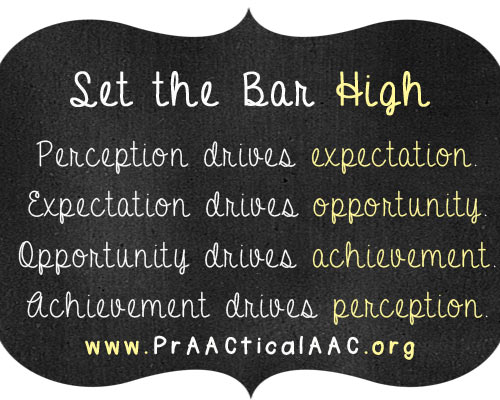
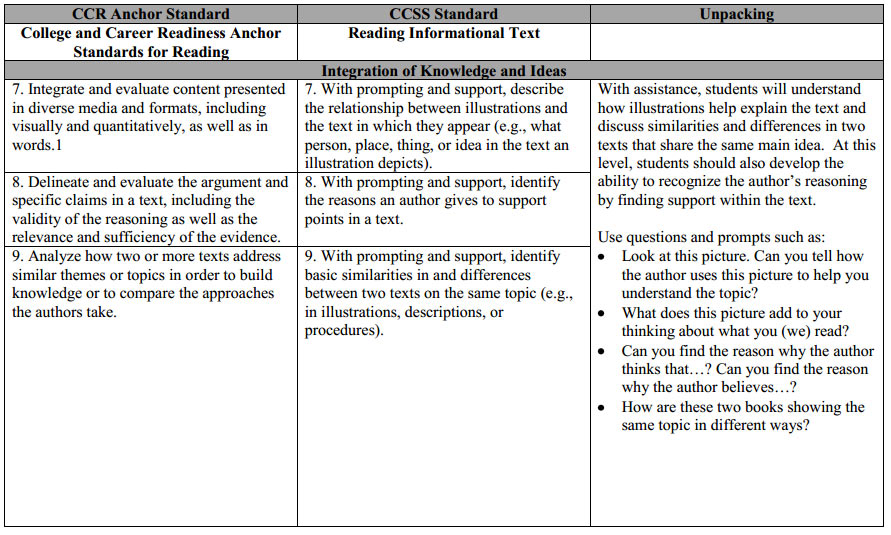
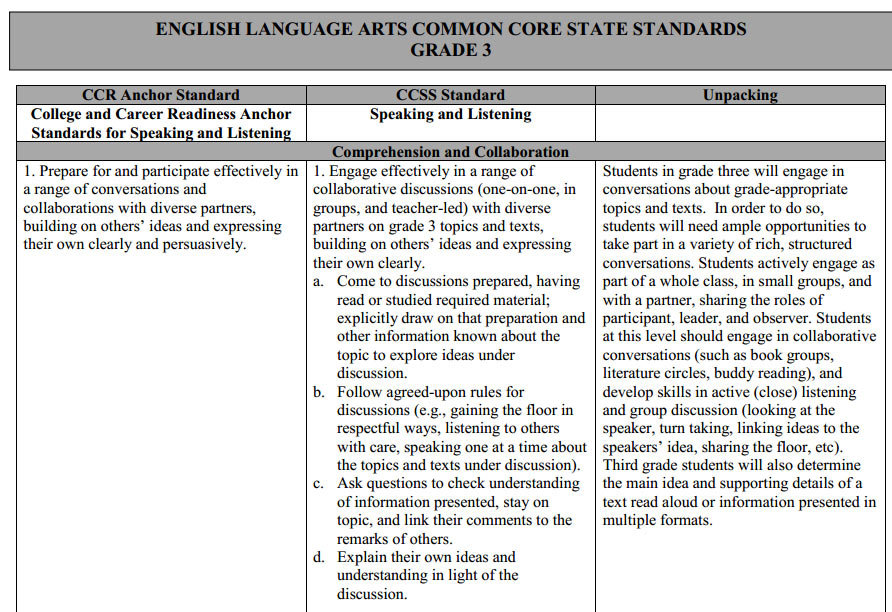

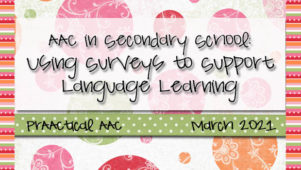
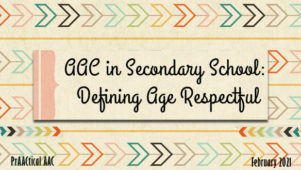
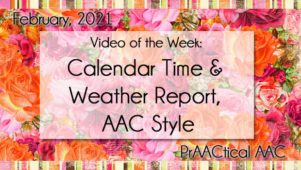
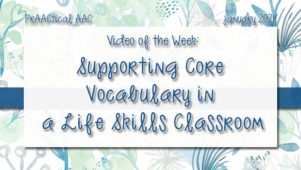
2 Comments
I would like to make this as a poster for my room. If I attribute it to you, may I use it?
Absolutely! Thanks for asking.